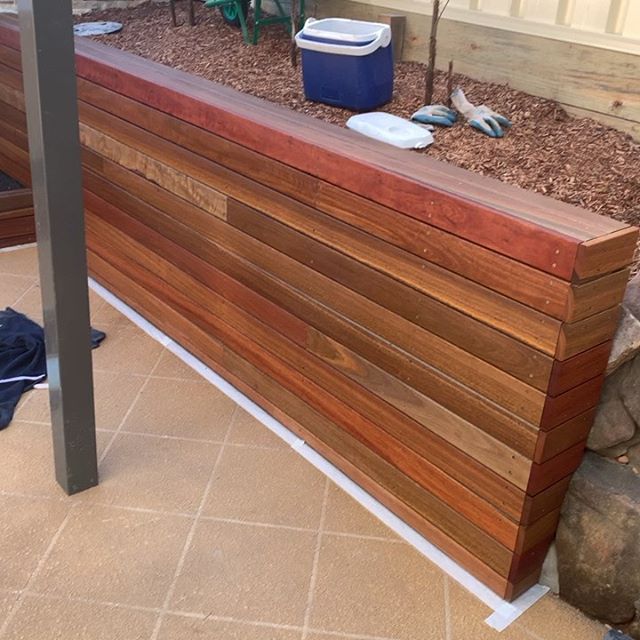
3 Best Woods For Garden Edging
3 Best Woods For Garden Edging
Have you ever wondered why your garden looks messy? Is the grass growing out of place? Does the soil fall over the path every time you take a little stroll through your garden? Do you feel like the design is all over the place?
You need garden edging.
Garden edging aims to accentuate your highlights and segment the path, lawn and garden beds. Your garden will be easier to navigate and maintain. A well maintained and structured garden will bring great pride to your family, and you will want to spend time enjoying the serenity.
What Is Edging?
Garden edging produces your garden with definition and structure. It is most noticeable between a lawn and the adjoining garden. However, landscape edges may refer to a flower border. It might take even a bed of shrubs or a single tree.
Maybe it’s the transition from a patio to the surrounding garden. It emphasises the beds’ lines and leads the eye to the focal point of the next part of your garden.
Now the question may arise, what should you use to make these edges? We’re here to answer that question.
What Are The Best Woods For Garden Edging?
Wood happens to be one of the more abundant materials for managing your garden edging, and it blends into the aesthetic. There are just enough wood types to make your garden unique and special, and it’s pretty accessible to all.
While the world has many kinds of woods, only a few are suitable for landscaping. You can get them in two ways. That is, either a treated version or an untreated version. The treated variants can hold the quality of the wood better in the materials but have been treated with preservatives dependent on oil.
Before buying, if you want an organic garden, you should check the chemicals used on the treated timber.
Some of the best woods for gardening include:
- Cedar
- Cypress
- Redwood
Cedar
Cedar is one of the best woods for garden edging. Although it’s more expensive than synthetic material, it’s reasonably cheap timber. It is red, which makes it a fine landscape choice.
This timber does not readily absorb moisture, making it resistant to warping. Warping changes the wood’s shape due to the fluctuation in the wood’s moisture content.
Cedar does require consistent upkeep. The timber needs to be washed and sealed every year or two to preserve the wood’s beautiful warm red colour. Eventually, the colour will fade to grey.
Cedar should be considered for garden beautification and garden edging needs.
Cypress
Cypress makes its way into the best woods for garden edging list because it is a timber that doesn’t rot. It’s an excellent alternative to Cedar, but it can be more expensive.
Cypress is a relatively durable wood. However, its durability is directly linked to the age of the specific tree. Younger cypress wood is less durable and cheaper. At the same time, the older cypress wood is more durable and expensive.
If durability is what you want, cypress wood is an excellent choice for garden edging to beautify your garden and improve the design.
Redwood
Redwood is resistant to pests, rot and moisture. It has excellent longevity.
Using it on the edge of your garden will mean that you have a magnificent advantage for many years. It absorbs stains well, and it also can preserve it’s colour longer.
This wood’s natural resistance to moisture prevents it from warping, a perfect timber feature used for garden edging. However, this wood is a good deal more costly.
There is not much of the older redwood left in the country. But if you can afford it, it will amp up your garden’s beauty to the next level and give your neighbours garden envy.
Why Should You Use Wood?
It would be best to consider several different things when selecting wood as an edging material for your garden. Durability, maintenance, pests and ease of installation are definite considerations. Here are some of the things you should take into consideration.
Versatility
Customise your look with timber exceptionally quickly. You can use one or several kinds of wood, lay it in a single layer or stack it. You can also use logs or flat wood slices, etc.
Sturdy
Like plastic, timber will not dry and crack in the light, and the hardwoods used in landscaping are not susceptible to warping or cracking, making them a reliable option.
Simple To Work With
Unlike stone, you can easily cut timber to the exact lengths you need without special tools. Before being shipped, you can also have logs removed, saving you the job.
Not Toxic At All
The absence of chemicals used in most landscape timber is an excellent feature for green gardeners. However, it can still be a problem with some treated wood, so be careful when buying if this is a concern for you.
Conclusion
The sheer simplicity and versatility of wood in garden edging applications make eye-catching, beautiful backyards, front porches and lawns. However, not everyone has a similar taste in aesthetics and may choose plastic or stones over wood.
This article gives you knowledge of the best woods for garden edging, the advantages of garden edging, and different options to look into so you can beautify your garden. We hope you found the various options listed helpful for your gardening journey.

0 comments